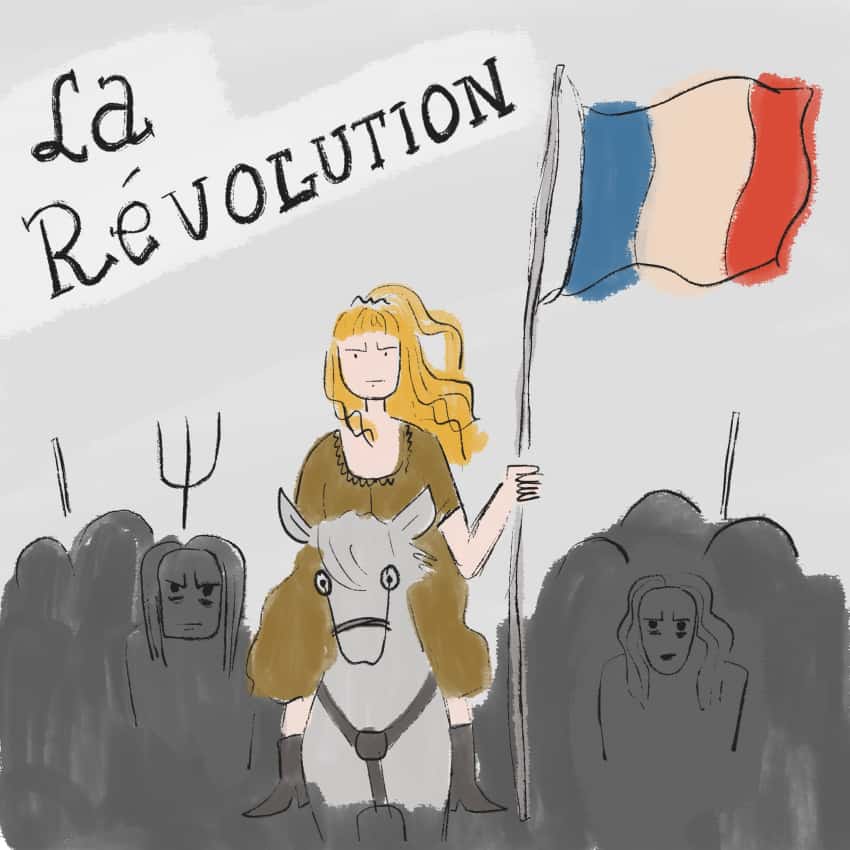
History, with all its bloody wars, political drama and significance makes for one heck of a Netflix series, but as the saying goes — history repeats itself.
Throw in a raging virus that turns aristocrats into flesh-eating zombies and you get La Revolution, Netflix’s reimagining of the French Revolution through a supernatural-horror lens. Set in 1787, the eight-part series follows physician Joseph Guillotin as he investigates a new mysterious disease causing nobles to kill the common people, intensifying the social tensions of the time that ultimately led to the fall of the Ancien Régime.
Guillotin’s commitment to his profession’s ethical principles in the midst of a society rife with inequality, greed and pessimism is what truly propels the storyline forward. It is because of his belief in the intrinsic value of human life that he comes to lead a group of rebels in their efforts to prevent the oppressive, virus-enhanced aristocracy from dominating society.
The origin of the “blue blood” virus itself is shrouded by mystery in the show’s narrative, which admittedly can be hard to follow at times. However, viewers can easily draw parallels between “blue blood” and the coronavirus wreaking havoc in our own time. Particularly relatable is the idea of society’s elites using the virus to overpower and control the general public.
There is a lack of trust between the leading powers and the general public that causes tension in the show. What is intended to be a peaceful demonstration to amplify their voices and concerns can easily turn into an outright rebellion. Events that transpire within the show, particularly the revolt of the working class against the aristocrats, can be compared with the current anti-masker movement that is developing around the globe due to the COVID-19 pandemic.
The aristocrats in La Revolution’s push for the “natural order of things” is fuelled by the fear that they would lose their status symbol and their lavish lifestyle. The “natural order of things” that the anti-masker groups in Saskatchewan are trying to maintain is based on the belief that there is a certain culture within the prairies that should be preserved, according to anti-maskers’ posts on social media. Hence, they feel the need to parade around a mall, protesting against wearing masks after they became mandatory in indoor public places across the province.
The distinction between the rebellion of the working class portrayed in La Revolution versus the anti-mask group lies in the outcomes of their actions and their intentions.
The working class people from La Revolution seek justice and proper treatment from the aristocrats. While the people in power enjoy their parties and relish in their finery, people in the cities and towns are working hard to make ends meet.
People fighting for their freedom, whatever form that may take, can cause a lot of catastrophe. La Revolution was fought for the betterment of working class people and lots of lives were lost in pursuit of that cause.
While the comparison between the show and the anti-masker movement may seem like a longshot, there is a common theme of resistance to authority in the pursuit of collective freedom. Does the anti-masker movement then run the risk of history repeating itself? This is a question viewers may very well ask themselves.
Overall, from the amazing cinematography and breathtaking shots all the way to the gory killing scenes, La Revolution proves itself to be a binge-worthy show for horror fans and history buffs alike, all while offering some thought-provoking parallels to the current crisis we find ourselves in.
Final verdict for La Revolution: 8.5/10
As for the anti-masker group in Saskatoon — well, we’ll leave it up to you.
—
Muhammad Awan & Kristine Jones A. Del Socorro | Culture Editor
Graphic: Anh Phan | Design Editor